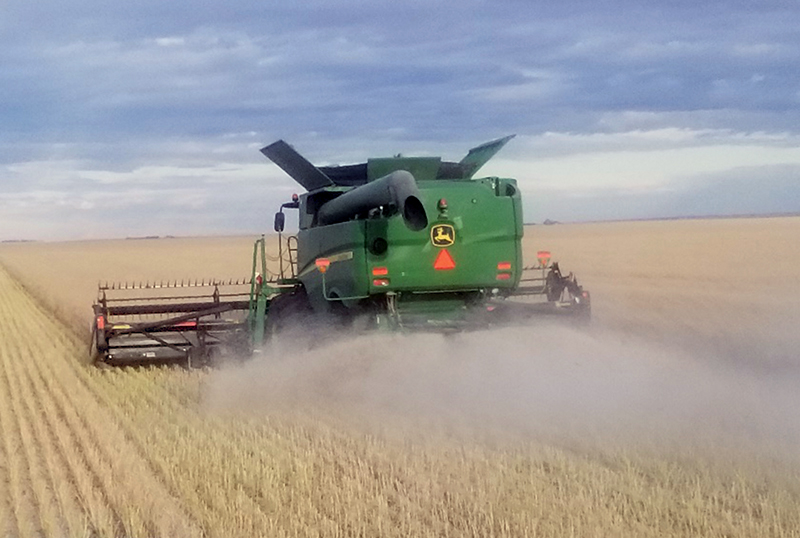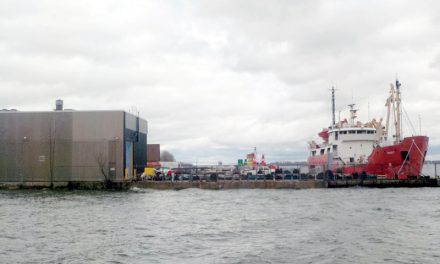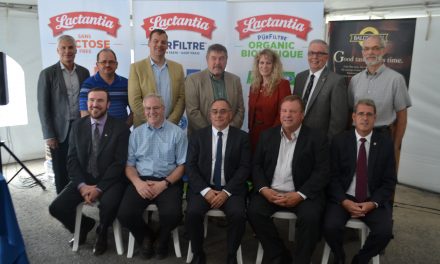Spreading residue out the back of Lawrence’s combine. Courtesy Photo
By Kelsey Banks, Agronomist
Kelseyabanks3@gmail.com
When you read this article’s headline I bet you thought one of two things; Either, “This article should be about eastern Ontario soil health” or, “Wow, that is pretty cool!” I believe that one of the best things about agriculture, being a tight knit community across the globe is that we can connect with others and learn from each other.
In 2014 I spent a year in Rosetown, Saskatchewan, which is about one hour 10 minutes southwest of Saskatoon working for a crop inputs’ supplier. While I spent time there, I learned a lot about agronomy, managing large acres, and how they handle some extreme weather conditions while growing crops.
One grower I met that is located near Rosetown is Stuart Lawrence from Lawrence Farms Inc. I met Lawrence through social media at first, but then I went out to his farm to discuss soil health and what he is doing on his farm to work toward building healthier soil. Throughout our conversation, I recognized the differences in growing environments and how prairie growers work toward increasing their soil’s health.
The prairies have a different growing season than we here in Eastern Ontario do. Here, we tend to have to manage our crops and potential for all pests with our humid weather and amount of precipitation. In the prairies, the growers must work with a dry growing environment most years with Lawrence’s estimate of approximately 150-200mm of annual precipitation a year and a lack of humidity. As Lawrence said, “moisture is limited and it is tough to grow biannual or perennial crops.” Prairie growers tend to rely on the moisture from the snow. Also, the prairies tends to get their first heavy frost earlier than Ontario.
Lawrence became interested in soil health through his father who started to no-till the farm to conserve moisture, keep the soil covered, and manage wind erosion as a typical day the wind can be blowing 40 to 50 kilometers/hour. Keeping these goals in mind, Lawrence has a crop rotation consisting of durum wheat, malt barley, canary seed, flax, canola, and red lentils in his heavy clay ground. Lawrence mentioned that he is growing less lentils because there will be less residue. He enjoys growing flax because the stubble is tough and can stay to help protect the soil for years.
For us in Ontario we are looking more into cover crops and other soil conservation methods to increase our soil. In the prairies with the growing environment, like us, there is still a lot of trying to figure out what is the best method for each field. Also, sometimes cover crops are not an option for the prairies so they must rely on other methods.
One method he is using to increase soil health is by utilizing the real-time kinematic (RTK) system to seed between the last crop rows and leave stubble standing. For residue management, he spreads the residue as he combines. Also, when combining he aims to leave 30-45cm of standing stubble.
Lawrence is a great example of a grower from the prairies that has the same goal as many growers in Ontario have – increase soil health.
If you have questions about how to increase your soil health, please contact your agronomist.












